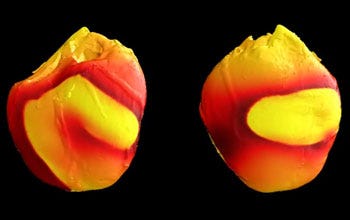How Cyber-Physical Systems Can Enhance Medtech Devices
May 19, 2015
The National Science Foundation has backed a multimillion dollar project to advance state-of-the-art medical and cyber-physical systems to improve and accelerate medical device development and testing.
|
Simulation of electrical impulse propagation through the heart during ventricular fibrillation (Image courtesy of National Science Foundation) |
Kristopher Sturgis
The National Science Foundation recently announced two awards that total $8.75 million in an effort to advance medical and cyber-physical systems (CPS), an endeavor meant to bring together both computation and physical components.
The first project aims at developing a "Cyberheart"--a platform designed to create virtual, patient-specific human heart models along with associated device therapies. The second project will combine teams of microbots with synthetic cells to perform functions that could eventually lead to tissue and organ regeneration, according to a NSF news release.
Both of these NSF funded projects will explore the different ways that CPS can be used in the realms of biology and medical technology, as these engineered systems are built from the seamless integration of computation and physical components. Cyber-physical systems have the potential to have an impact across many areas in medtech from disease prevention to emergency response. Integrating synthetic biology and robotics could hold the key to breakthroughs in advanced therapies and regenerative medicine.
When it comes to the "Cyberheart" concept, the idea of using 3-D models as a tool to enhance the way we see and understand the human body goes back several decades. In the late 1980s, a project known as the "Visible Human Project" began, which tried to provide doctors and researchers with the ability to see the human body unlike ever before. The venture also served as a way for medical device manufacturers to simulate how their products work, all in an effort to enhance the technology around us.
Researchers believe the "Cyberheart" could be used in a similar fashion, as researchers from seven leading universities and centers work together to develop far more realistic cardiac device models than any that currently exist. They believe the "Cyberheart" platform can be used to test and validate medical devices much faster and less expensively than any existing methods. They also believe the platform can be used to design patient-specific device therapies that are both safer and more effective.
As for the second project, roboticists and biologists from Boston University, MIT, and the University of Pennsylvania have come together to design a system of nanoscale robots with specially designed synthetic organisms. Together, they believe their hybrid "bio-CPS" will be capable of performing previously impossible tasks, such as microscopic assembly, and cell sensing within the body. According to the team, the project is built upon recent advances in the emerging field of synthetic biology, specifically the ability to rapidly incorporate new capabilities into simple cells. The group believes that the ability to introduce microbots that can be externally controlled could be quite transformative.
CPS technology is already being used in the medtech realm, as wearable sensors and implantable devices are used to provide quality, cost-effective care that can speed up disease diagnosis and prevention. These new NSF projects are designed to help ensure that these systems are reliable, predictable, safe, and secure.
Refresh your medical device industry knowledge at MD&M East in New York City, June 9-11, 2015. |
Kristopher Sturgis is a contributor to Qmed and MPMN.
Like what you're reading? Subscribe to our daily e-newsletter.
About the Author(s)
You May Also Like



